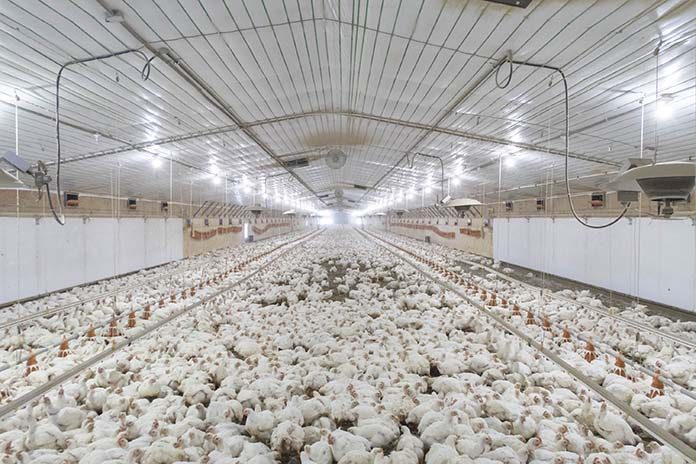
USPOULTRY and the USPOULTRY Foundation announce the completion of a funded research project at Iowa State University in Ames, Iowa, in which researchers used a laser for broiler house enrichment.
The research was made possible in part by an endowing Foundation gift from Ozark Mountain Poultry and is part of the Association’s comprehensive research program encompassing all phases of poultry and egg production and processing. A brief summary of the completed project is shown below.
Project #703: Validating current broiler welfare auditing programs and advancing enrichment – (Dr. Elizabeth Bobeck, Iowa State University, Ames, Iowa)Dr. Elizabeth Bobeck and colleagues at Iowa State University in Ames, Iowa, recently completed a research project in which they examined the feasibility of using a novel laser device in a broiler house to stimulate enhanced bird activity. It was found that bird activity increased but also weight gain and feed conversion significantly improved when this laser enrichment device was used. The authors also make recommendations on improving the guidelines for broiler welfare audits.
Today’s broiler spends much of the day inactive, and physical activity has been shown to improve leg health and reduce lameness.
To promote broiler house movement, environmental enrichment may be added to broiler houses; however, few published studies have been able to show a positive effect of broiler house enrichment on bird activity without sacrificing performance outcomes. A novel laser environmental enrichment device was implemented throughout a 6-week grow-out cycle. It was hypothesized that the laser would stimulate natural predatory behavior in the broilers which, in turn, would increase locomotion and feeding. It was further hypothesized that the broilers’ leg health and growth rate would improve due to increased movement throughout the growth period.
The objectives were therefore:
- Validate quantitative methods to evaluate broiler bird welfare, specific to production (performance, leg lameness, breast blisters, footpad dermatitis, ammonia production, litter quality, behavior and movement outcomes); and
- Evaluate experimental broiler house environmental enrichment using quantitative methods verified in Objective 1.
The unique laser enrichment device tested here not only significantly increased broiler house activity (weeks 2-5) but improved performance outcomes including feed intake and weight gain, average daily gain and feed conversion ratio. Importantly, measures of bird welfare, including gait score, contact dermatitis score, tibia quality, and air and litter quality, were not negatively impacted by laser treatment. The consistently increased weight gain observed in the laser-enriched birds averaged to a greater end weight of 0.24 kg/bird on day 42. Improved feed conversion (a significant 18-point decrease in the finisher period) translates to greater than 5% reduction in feed costs. Finally, the laser device is practical to implement in commercial barns and does not require altered management or bird contact, allowing for ease of cleaning and use over multiple flocks.
Based on the utility of measures studied through Objective 1, a simplified measure of broiler house behavior and quantification of distance walked are recommended in the commercial audit. Further, a novel gait-scoring platform tested here is recommended for research and commercial use. Measures of contact dermatitis should be adapted to include on-farm scoring, but measures of bone quality are suitable for research only. Recommendations are made for producers that can be used on farms to measure broiler welfare and recommendations are also made for updating currently used broiler welfare audit guidelines.
A complete report, along with information on other Association research, may be obtained by going to USPOULTRY’s website, www.uspoultry.org.
The research summary can be found on the USPOULTRY website. Information on other Association research may also be obtained by visiting the USPOULTRY website: www.uspoultry.org.

















